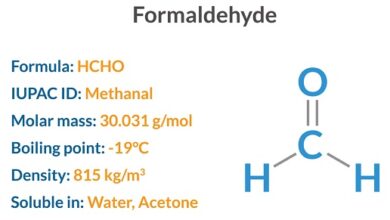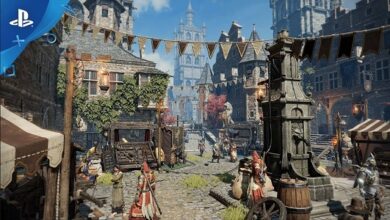What is Altar of the Dead Origin Symbols and Facts about the Day
Day of the Dead
Also called the Day of the Dead is a commemorative date celebrated in Mexico on November 2, in which it is customary to go to cemeteries to visit the tombs of loved ones and prepare altars with food, candles, flowers and other elements. It is said that only on these days can souls return from the beyond to be close to their loved ones. In this article we will provide you the information about the altar of the dead.
Origin of the Day of the Dead
Although the celebration is in line with Christianity , the origin of the Day of the Dead predates the arrival of Europeans in America. The festivity is part of the pre-Hispanic indigenous culture , being celebrated by the Aztec , Mayan, Zapotec and Mixteca peoples.
During the colonial period in Mexico, which began in 1521, there was what is called religious syncretism between the celebrations of indigenous culture and Catholic holy days. It was at this point that All Saints’ Day and All Souls’ Day merged with the commemoration of the Day of the Dead.
The belief of the funeral tradition is that on this day the souls of the dead return to Earth to be with their loved ones. The ritual explains how the people of that culture dealt with death.
It is believed that the way family and friends deal with the death of their loved ones interferes with their “after-death life”. Therefore, the Day of the Dead is a time of celebration, of telling and remembering stories and honoring the memory of those who died.”
How is the Day of the Dead celebrated?
The celebration takes place in houses and cemeteries. Offerings are made with the favorite foods and drinks of the dead. Fruits, plates, water and much more are offered.
Altars are set up, and streets and houses are decorated. It is also common for people to dress up, dance and sing in the streets of the main cities of Mexico .”
Veja mais sobre “2 de novembro — Dia dos Mortos” em: https://brasilescola.uol.com.br/datas-comemorativas/2-de-novembro-dia-dos-mortos.htm
Symbols of the Day of the Dead
While the Day of the Dead celebration can vary depending on the region of Mexico, below are some elements that are typical of the day across the country.
Altar
The altar de muertos (altar of the dead) can have from 2 to 7 levels.
A traditionally built altar has 7 levels, each with specific elements:
- 1st level (ground): Cross made of flowers, seeds, or fruit.
- 2nd level : photograph(s) of the deceased person(s) to whom the altar is dedicated.
- 3rd level : the deceased person’s favorite dishes and fruits.
- 4th level : pan de muerto (bread of the dead), a type of traditional bread offered as food and consecration.
- 5th level : salt, which symbolizes purification.
- 6th level : dedicated to the souls of purgatory
- 7th level : image of the saint of family devotion
In addition, other offerings are also distributed around the altar, such as: incense, candles, water, colored paper perforated with images, flowers, sugar skulls and objects of affection of the deceased person.
sugar skulls
Calaveras dulces (sweet skulls) are sweets made with sugar, hot water and lemon, and molded into the shape of a skull.
Sweets are usually confectioned in different bright colors and sometimes have a name written on the forehead.
There are two theories about this name: it is said that it can be written either the name of the deceased loved one to whom the skull is offered or the name of the person who makes the offering. According to tradition, anyone who offers a sugar skull guarantees their place in paradise.
Although the sugar skull is the traditional one, currently there are also skulls made of other ingredients. Some are chocolate-flavored, others are dipped in honey, and there are even peanut skulls.
Skeletons with clothes and props
Skeletons are often scattered everywhere, from houses to streets. They are usually dressed in clothes, hats and accessories, such as earrings and scarves. According to tradition, they welcome the souls who come to visit their loved ones on the Day of the Dead.
Among the wide variety of types of skeletons, there are some small, some large and even some life-size. You can even find decorated human skeletons.
However, most consist of representative dolls, made from materials such as papier-mâché, wood and clay.
For some cultures, Dia de los muertos decorations can seem a little morbid, but for Mexicans, fun skeletons decorated in bright colors can help the living deal with death in a less sad way.
decorative flowers
Flowers are used as decoration to represent the beauty and transience of life. They usually integrate, for example, a large arch placed in front of the altar as a way of entry portal for souls to pass and visit the living.
Although several types of flowers are used in the decoration of the Day of the Dead, Mexicans usually use some specific ones, such as the cockscomb, the carnation, the chrysanthemum and the cempasúchil (known as marigold ) .
Of all, the cempasúchil is, without a doubt, the most emblematic flower of this commemorative date. Its yellow color represents the Sun which, according to Aztec tradition, guided the souls of the deceased to their last home.
The flower is used to decorate altars and tombs. In addition, its petals are often used to form a path to the altar of the dead, in order to help the souls of loved ones find it.
La Catrina
La Catrina is quite an iconic figure in the celebration of Día de los muerto s. The figure was inspired by the painting La Calavera de la Catrina (Catrina’s skull), by José Guadalupe Posada.
The figure is a representation of the skeleton of a high society lady. She wears an elegant dress and a glamorous hat, typical of the Mexican aristocracy of the late 19th and early 20th centuries.
The creation of the work was a social critique of a poorer Mexican population that, denying its indigenous origins, liked to pretend to have a European lifestyle.
La Catrina was one of several humorous skulls created to demonstrate that everyone is equal and that social differences have no relevance in the face of death.
Facts about the Day of the Dead
In 2003, Day of the Dead was declared Intangible Cultural Heritage of Humanity by Unesco.
The Day of the Dead celebration can last up to 7 days. The party usually starts around the 26th of October and goes until the 3rd of November.
Day of the Dead vs Halloween
The theme and proximity of dates make Day of the Dead and Halloween celebrations seem similar, but there are considerable differences between the two.There are differences between Halloween and Day of the Dead.
The main one is that Halloween is of European origin , from the pagan festivals of the Celts . On the other hand, the Day of the Dead mixes indigenous and Catholic, Latin elements.
Another difference is the duration of both celebrations. While Halloween falls on October 31st, Day of the Dead celebrations can last up to a week.”
Veja mais sobre “2 de novembro — Dia dos Mortos” em: https://brasilescola.uol.com.br/datas-comemorativas/2-de-novembro-dia-dos-mortos.htm


